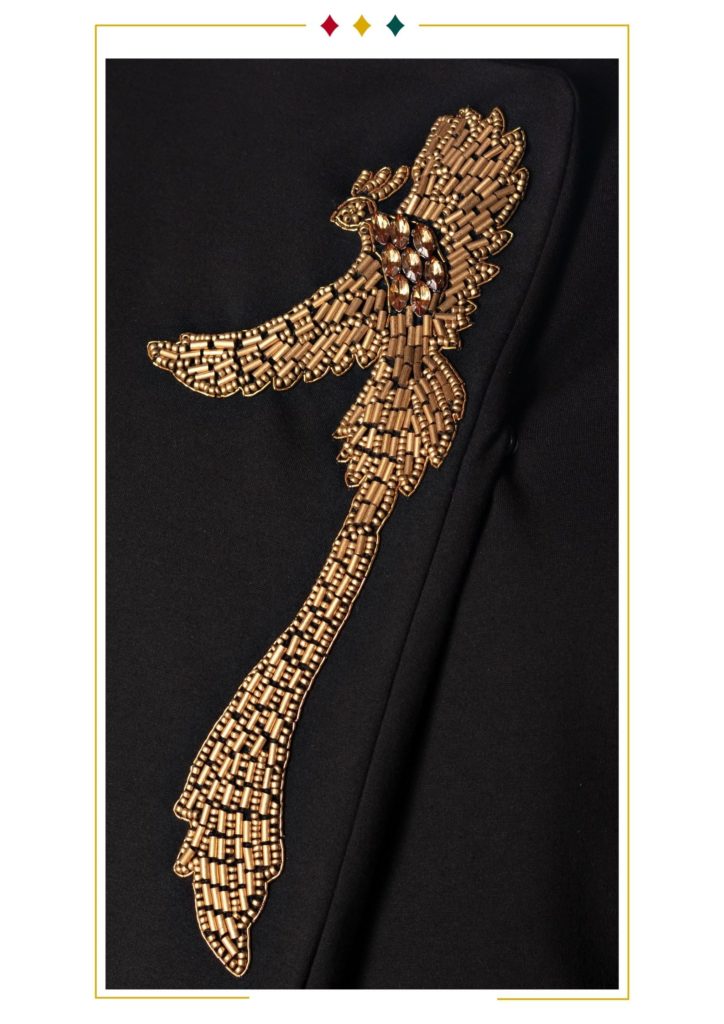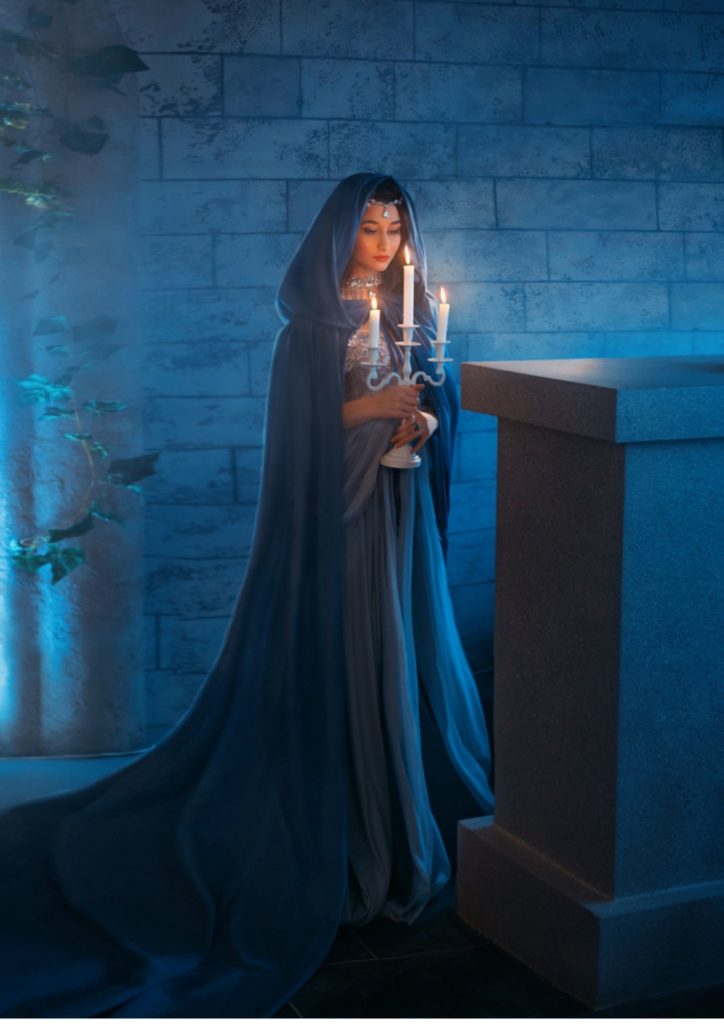At Showstopper, we believe that traditional art forms should never die. It is these artworks that make our clothes more valuable, giving it a nostalgic sentiment. That’s why we brought back some of the most iconic embroidery techniques from the past and weaved them into our state-of-the-art silhouettes. Every Showstopper creation is nothing but pure artistry on fabric, narrating the story of each technique and what it takes to create one.
Why not take a look at what each of these embroidery techniques are all about?
6 mostly used embroidery techniques explained
Bead work
What if we told you that the practice of stitching beads onto fabrics and other materials is as old as the Major Ice Age? It’s perhaps the very first form of embellishment that mankind learned. Of course, in those times beads were made of natural materials like seeds, bones, stones, and seashells. Beadwork has spanned millennia and civilizations, across Egypt, Indus Valley, Greece, Rome, and more.
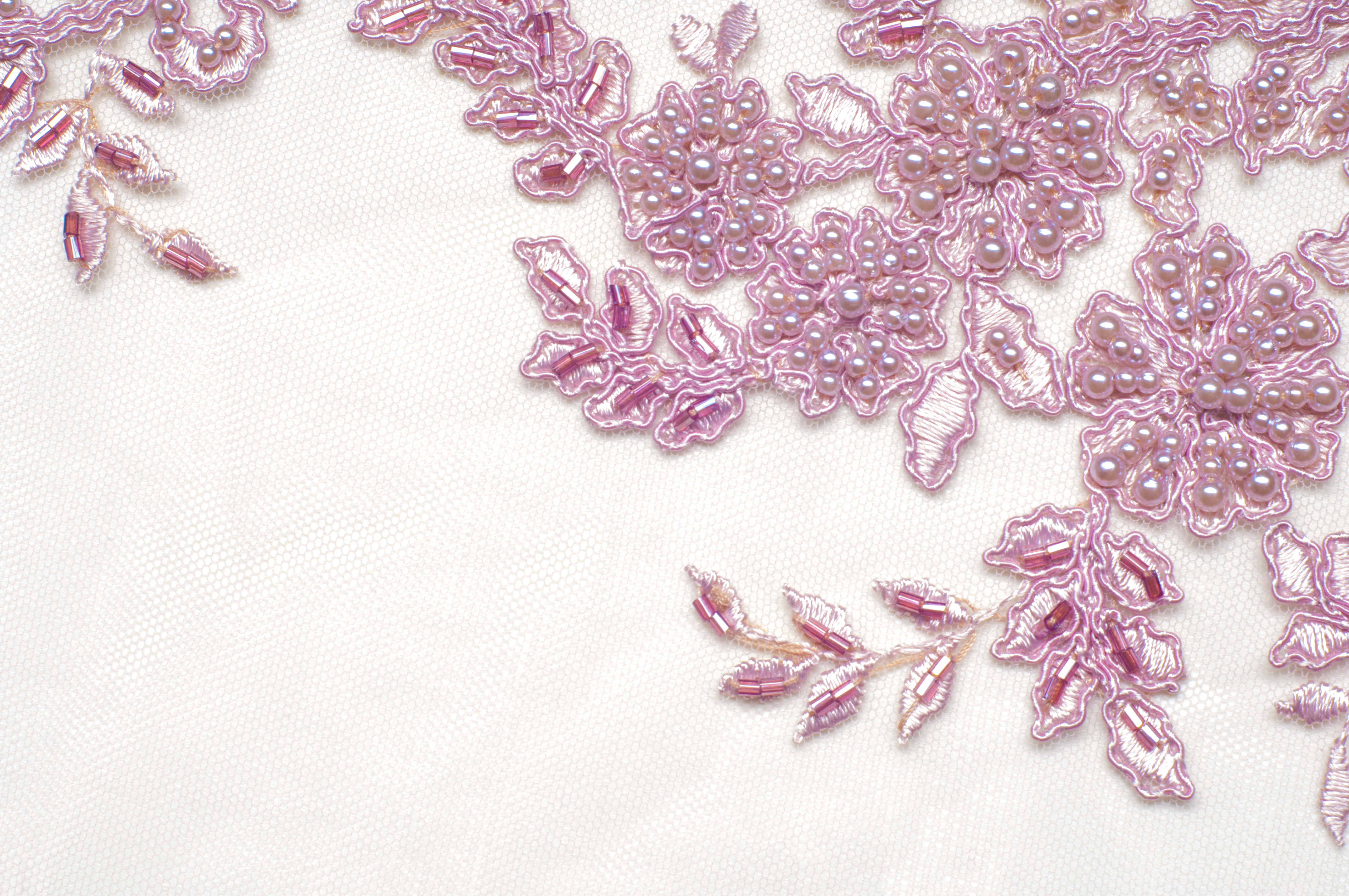
Every culture shaped the artform in their own way. For instance, in Europe, they call it Tambour or Luneville. Till date, premium luxury designers use them in haute couture. In South Asia (India, Pakistan, Bangladesh etc.) artisans sew the beads with metallic threads (also called Zari work) to give a rich look on ethnic clothing.
Beads are either stitched directly on the cloth using fine needles, or needled together and then stitched. A third technique involves placing the beads on the base design and crouching them together.
Stone work
Like beads, adding precious and semi-precious stones to garments is also historical. It was mostly the royal garbs of ancient times, where you would find these embellishments. Artisans would weave gems onto cloth to romanticize the attires. But time jewels became expensive and scarce. That’s when Rhinestones became the new, affordable gem. Originally found as naturally-occurring quartz in the Rhine River valley, Austria, these stones are as old as the 13th-century.
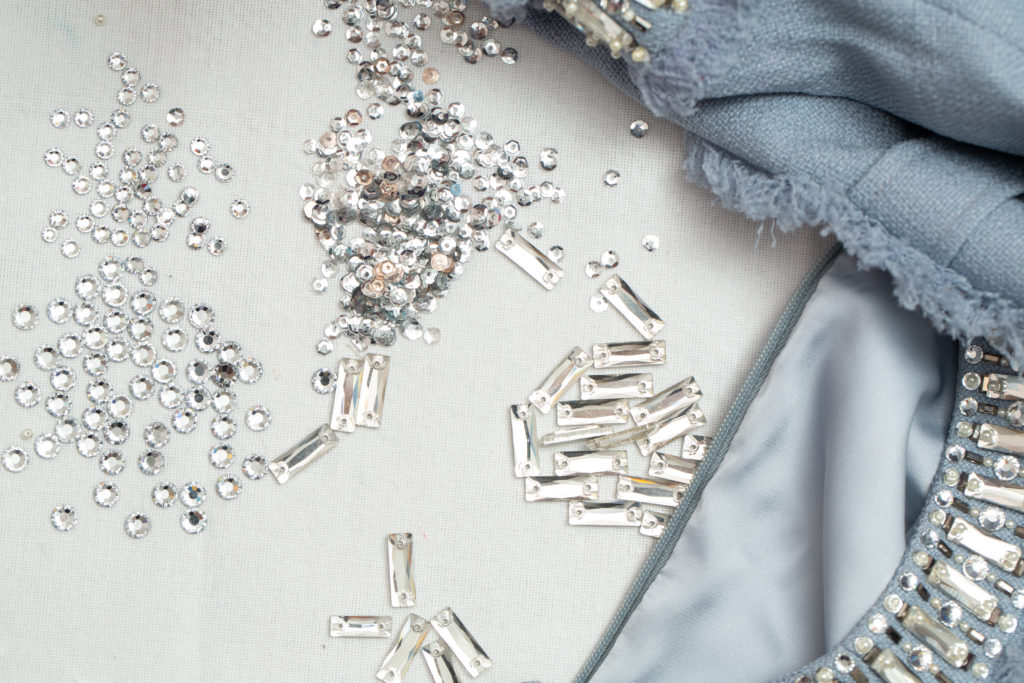
The shiny, eye-catching little stones can add that extra sparkle to any garment and are still a rage in fashion.
These stones can be glued on, sewed on, or fixed on fabric with heat.
Kundan
One of the oldest forms of Indian jewelry arts, Kundan embroidery is synonymous with richness and aristocracy. The word translates to “refined gold”, which comes from the traditional technique of using molten gold in the artistry of Kundan. Started in the Mughal era, as a jewelry design technique, this art form quickly moved on to becoming a popular embroidery technique.
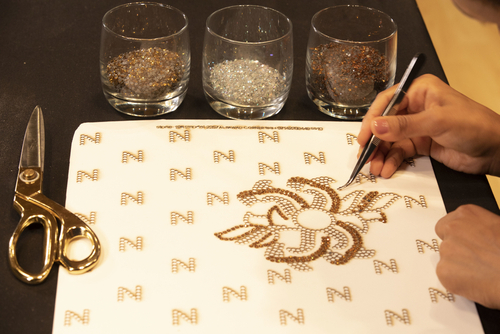
This distinguished artwork also has a quite a toiling process. It starts with a skeletal framework, followed by pouring wax on the framework and molded into the design. The artisans shape the gems or uncut stones create holes for enameling. Then they apply lac on the back and seal with a layer of gold foil that holds the gems onto the framework. Finally, they cold-solder the stones using burnishing techniques and finally polish them to give the dazzling output.
Don’t be surprised if we tell you that this entire process also requires different artisans, each with their specialized skills. And till date, this is a purely handmade technique and cannot be automated.
Zardosi
Dating back to 550 BCE, Zardosi is another Indian traditional embroidery. Persians brought this technique to the new land and it never left. Albeit, in those days, the threads were made of gold and silver, which, now, are substituted with copper wires with gold or silver polish, or silk threads. You can often find nature motifs made with Zardosi. However, you may find some extremely premium haute couture using real gold, silver, and copper threads.
Steeped in history, social and cultural values, Zardosi remains an integral part of Indian sartorial art.
Sequin embroidery
Another ancient technique of embellishment that is still a rage. In the days of Indus Valley, which is when use of “sequins” technically started, they were mostly metal discs. Then the trend passed a lot of hands, cultures, and artisans, where gold coins were used as sequins.
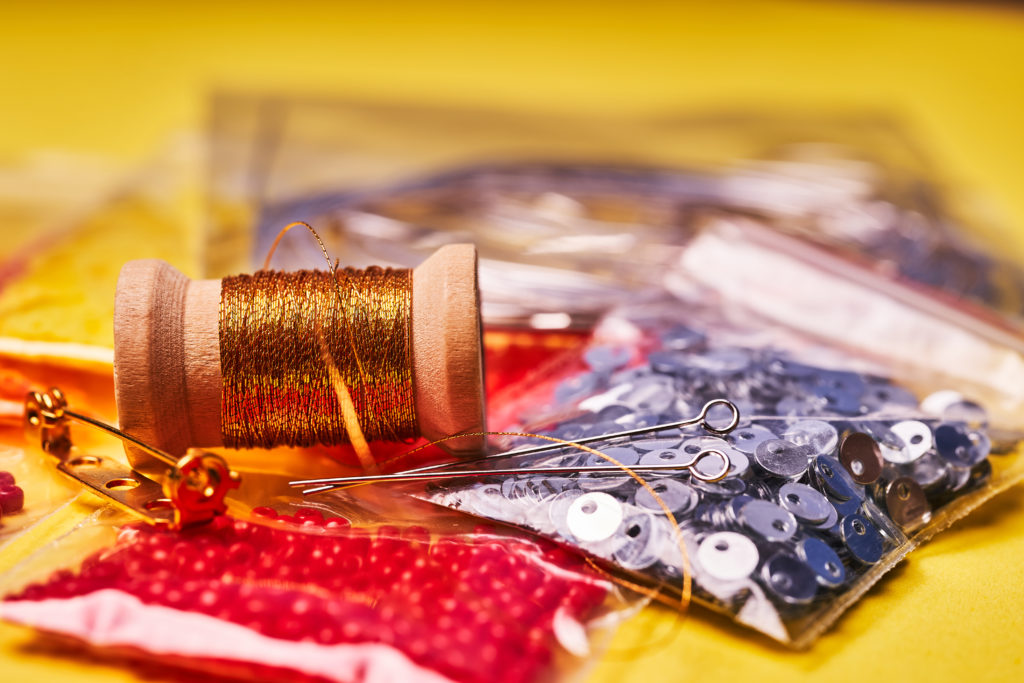
Sequin comes from the Arabic word “Sikka” meaning coin, and later zecchino in Italian, after the Venetian ducat coin, and finally in the 16th century rendered into the French word “sequin”, which is what we still call it.
It was only in the 1930s that the modern-day, artificially-made sequins were invented.
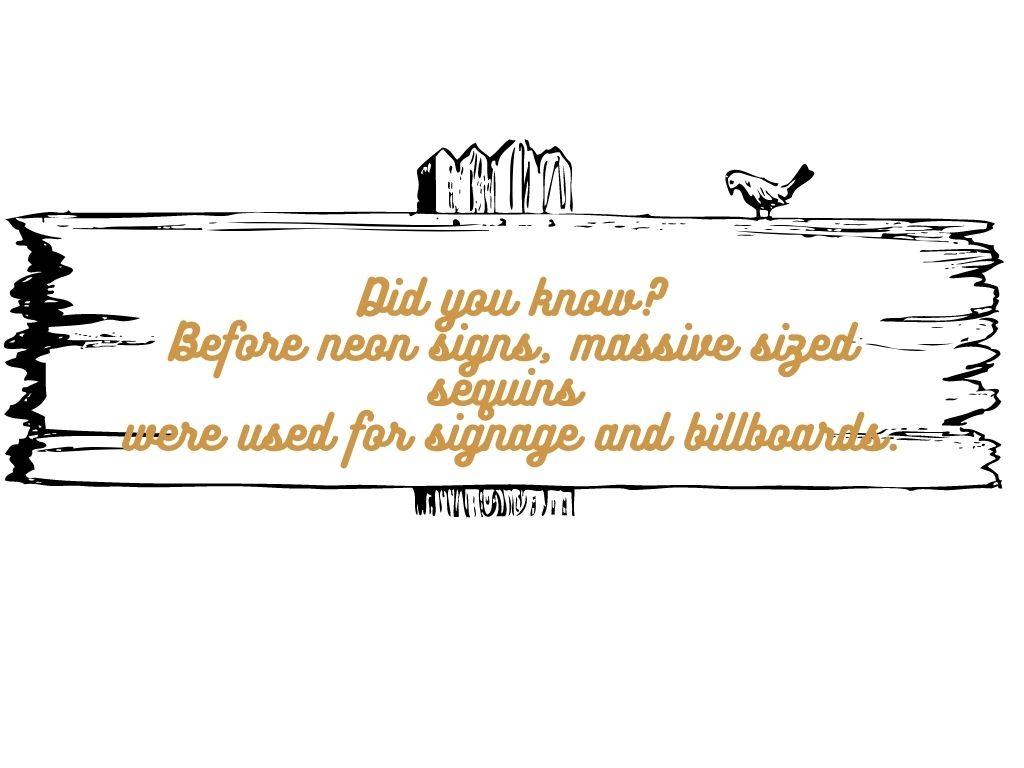
Mirror embroidery
Also called “sheesha”, the art of using tiny mirrors on fabrics is also an ancient Persian art. The technique later traveled through South and South East Asia.
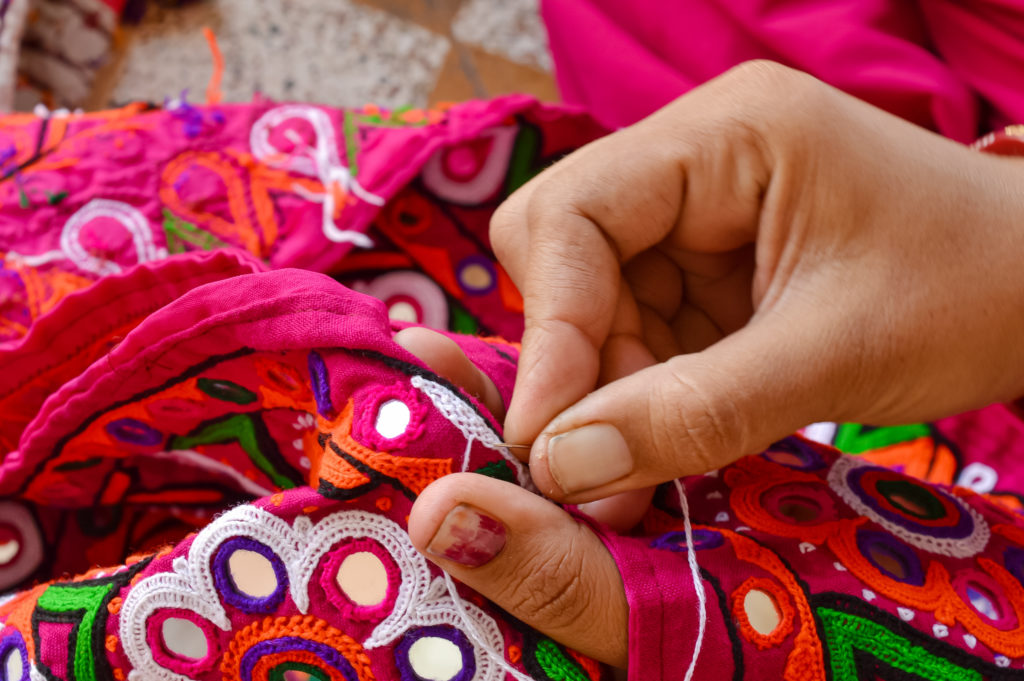
The Persians believed, that mirrors help trap the evil eye, reflecting bad luck or evil spirits away from the ones wearing it. Simply put, it was a means to keep negativity at bay. The belief soon trickled down to other communities, who started to incorporate the use of mirrors in clothes, tapestry, and wall hangings to put outside the house entrance.
At present, mirror work is an integral part of ethnic Indian embroidery style.
The Showstopper value in traditional embroidery techniques
If there’s one thing that hasn’t changed about these embroidery techniques, it’s the labor that goes in creating each one of them. Endless hours and personalization techniques are what makes these embroideries so valuable. Tradition, artistry, and a deep human connection in every design, now that’s what real luxury is all about! In a time of constant automation, we strive to keep these art forms alive and that makes every Showstopper creation special.
